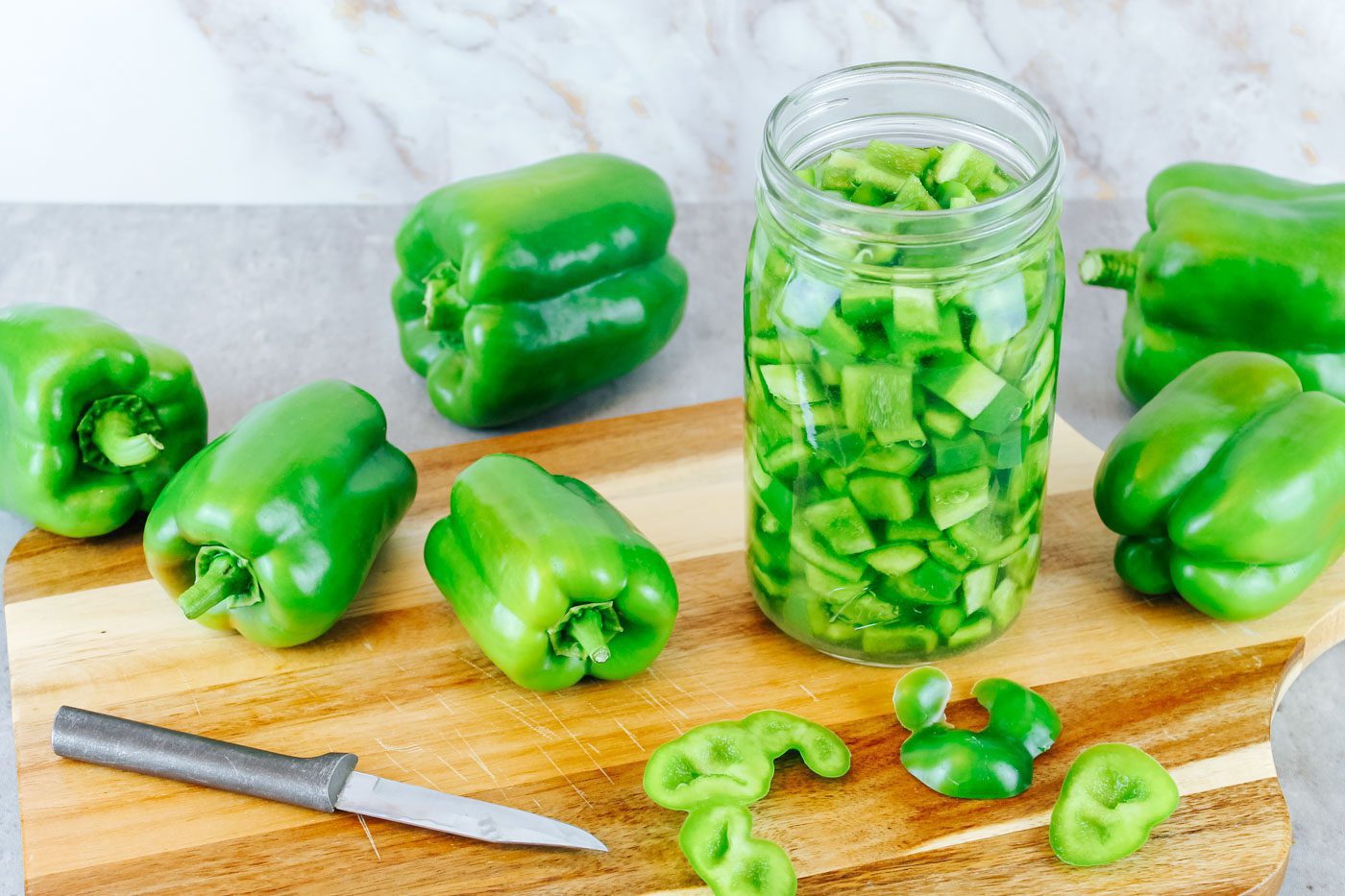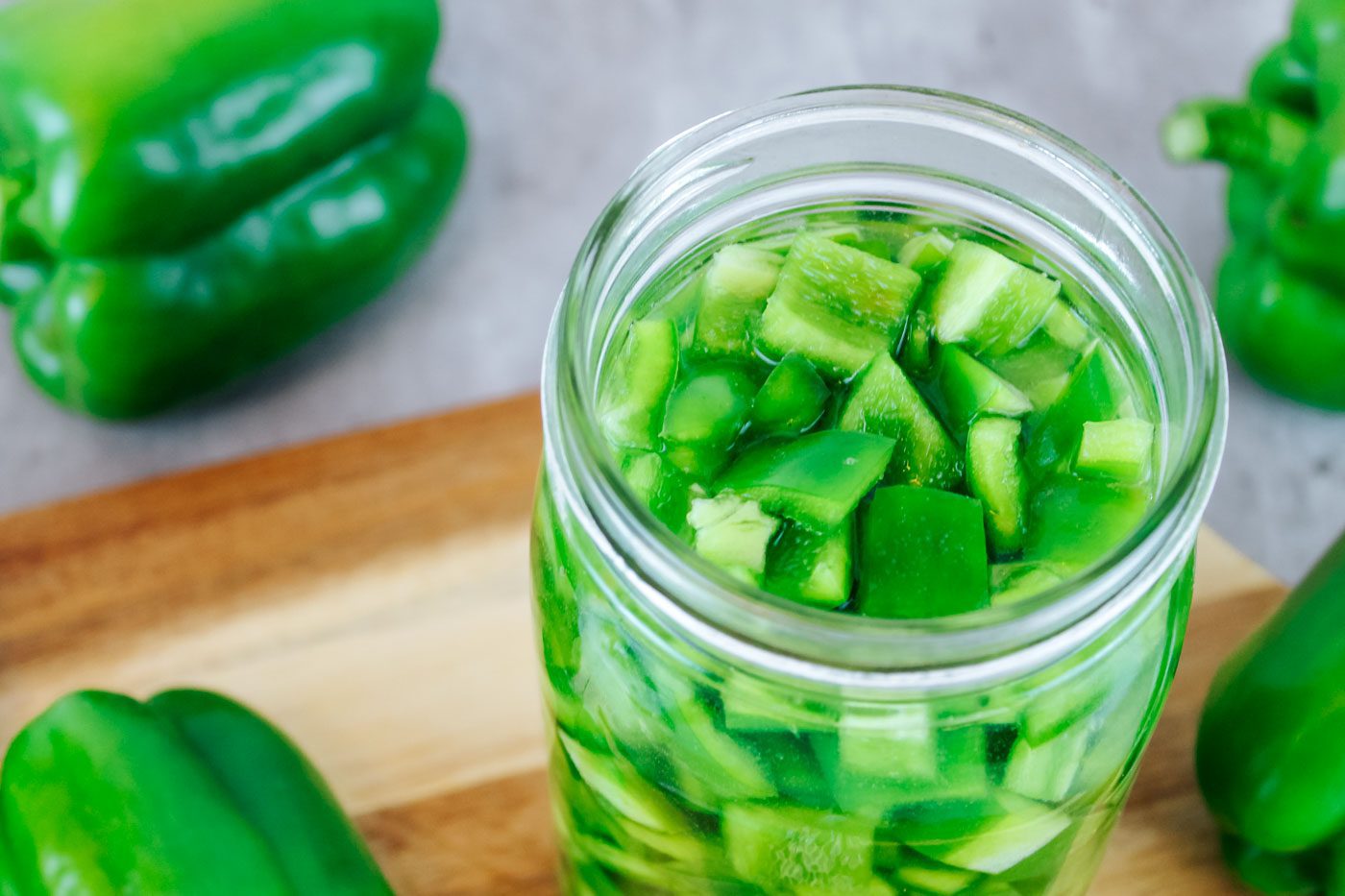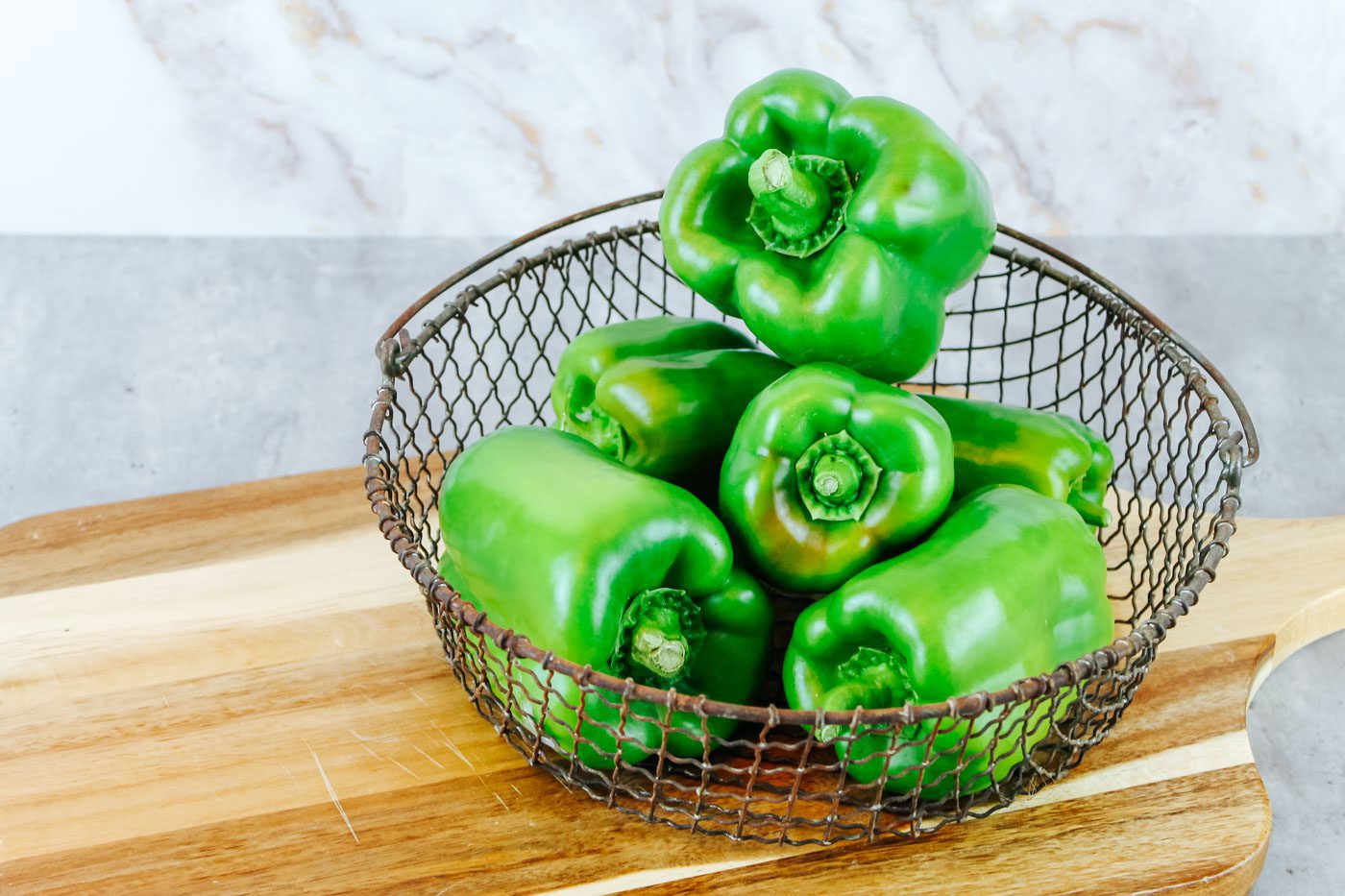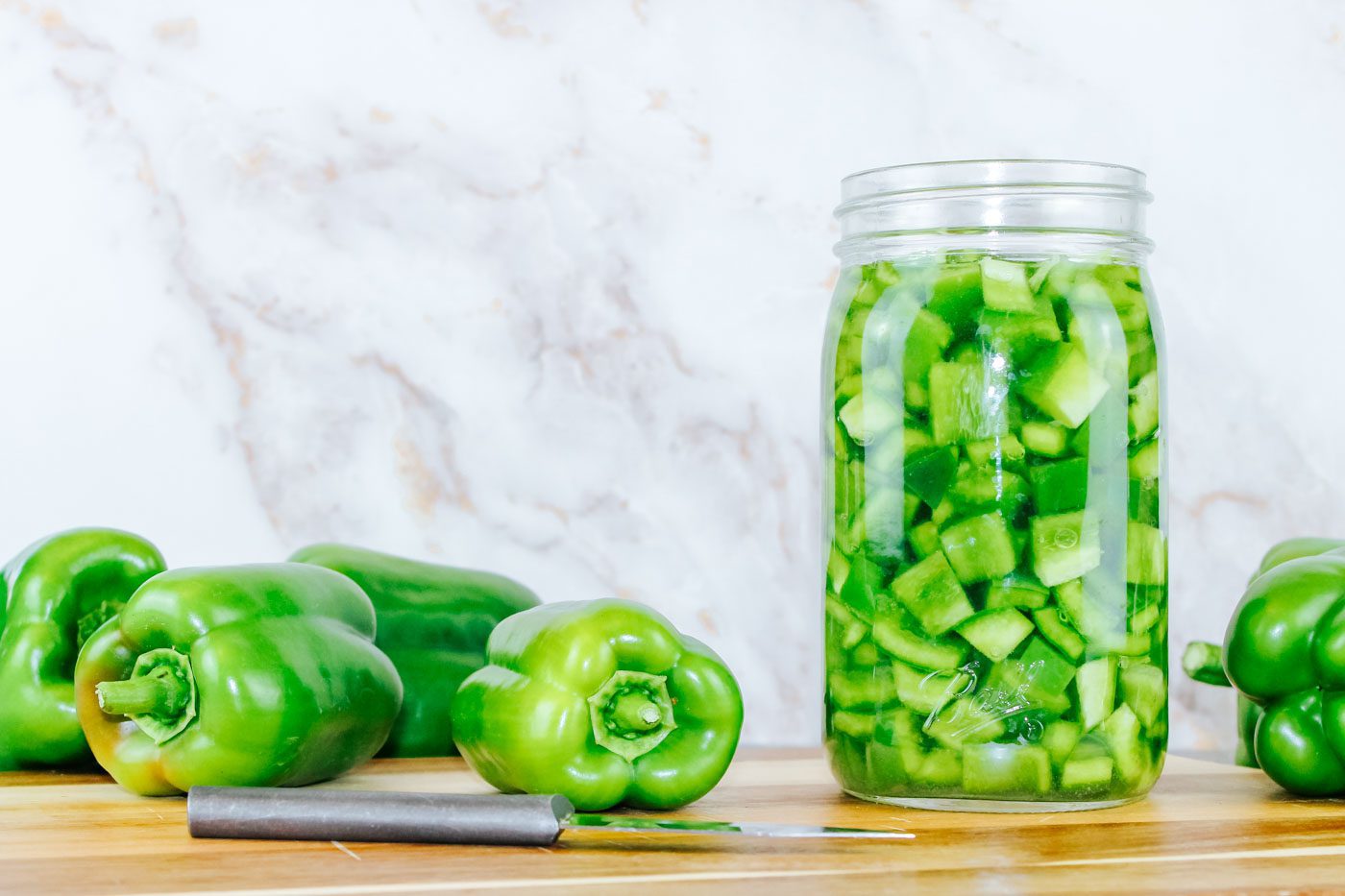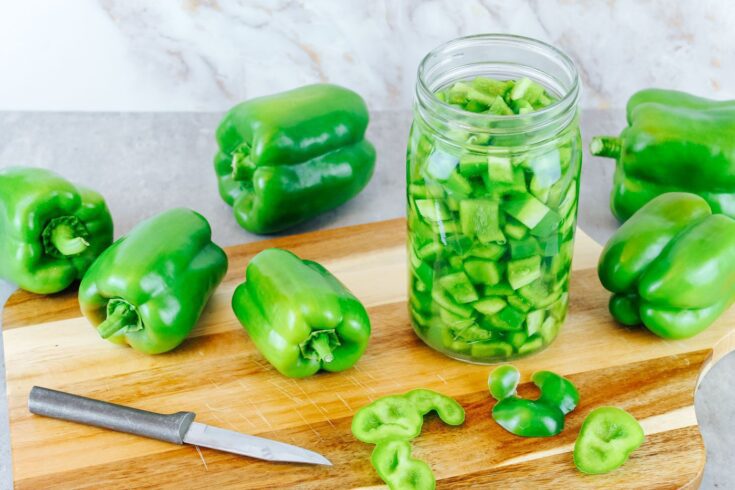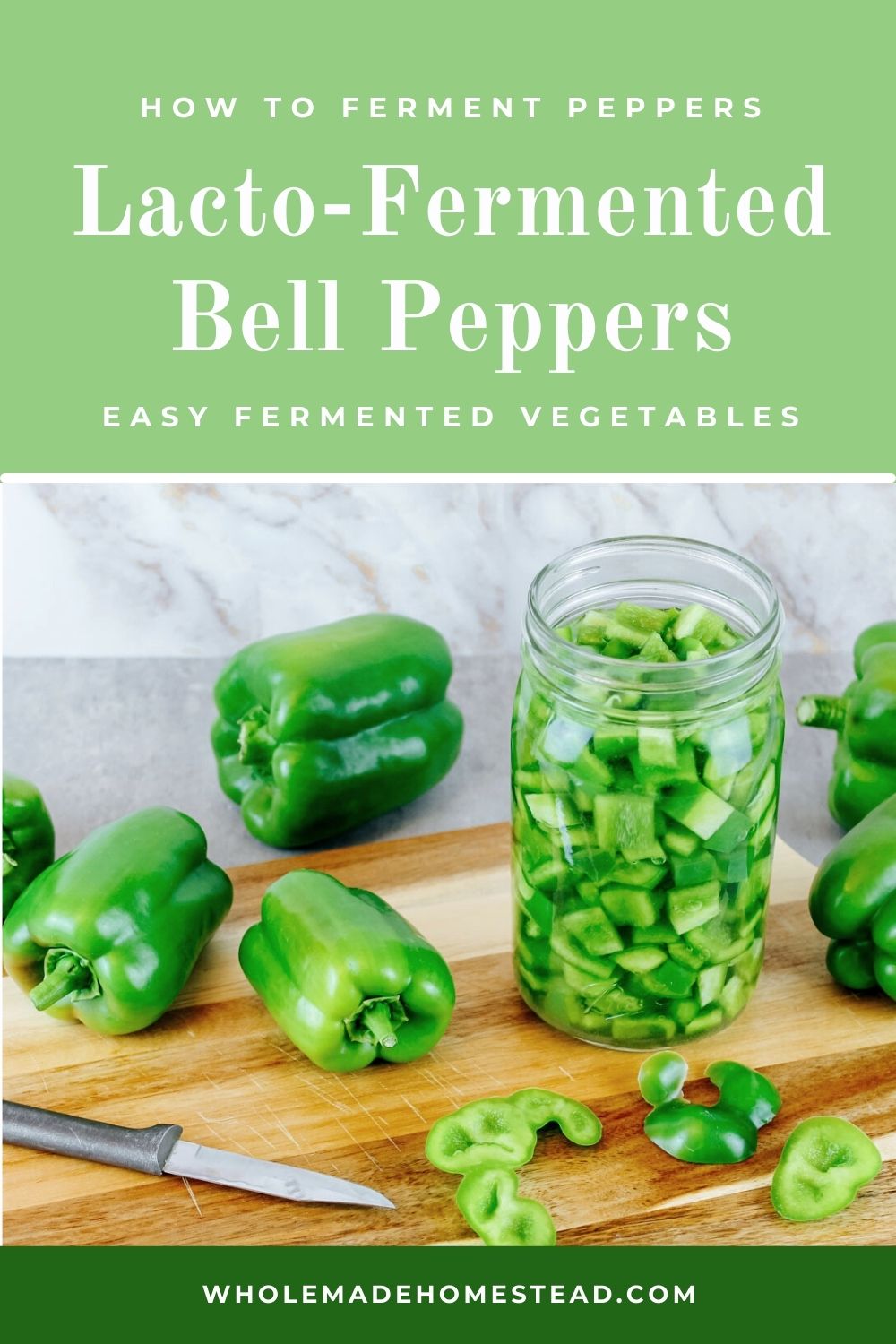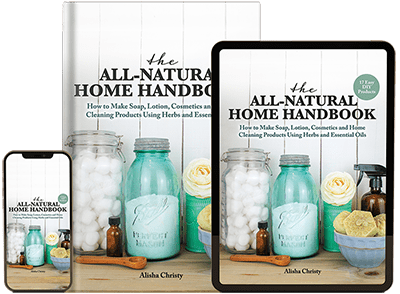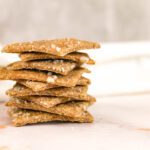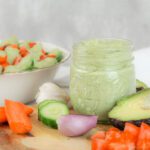Incredibly easy to make and excellent for your gut health, these fermented bell peppers make a wonderful addition to pizzas, tacos and salads. Learn how to make this probiotic-rich food using just a handful of peppers and a simple salt water brine.
This post contains affiliate links, which means I make a small commission at no extra cost to you. In any case, I only link to products we actually use on our homestead and that I believe can truly benefit to you. See my full disclosure here.
Each spring we start our seeds indoors on a metal rack below a few grow lights. We plant everything from tomatoes and herbs to cut flowers and peppers. Our pepper varieties are usually pretty simple, a few jalapeños for salsa making, poblanos for a nice smokey flavor in our chili and some bell peppers.
We get our King of the North bell pepper seeds from Baker’s Creek. They are the kind of variety that starts green but if you let them hang out on the branch long enough, they are supposed to turn red — into a sweet bell pepper. But usually I either I don’t have the patience to wait for them to turn red or the frost hits causing us to have to harvest them early.
Most of the time we use bell peppers in our cooking for things like stir fry and fajitas or Spanish rice and ground beef. Last summer I experimented with fermenting a jar of bell peppers. I wasn’t sure how they would turn out. But after just a week on the countertop they were ready. I taste tested them and they were excellent! Over the winter I used the fermented peppers on homemade pizza — delicious! I was sure sorry I hadn’t fermented more than just one quart.
This year, I won’t be making that mistake again.
If you’re looking for a delicious, gut healthy way to use up some bell peppers, try fermented green peppers. They are easy to make and are a great addition to a variety of meals.
What’s the Difference Between Pickled Peppers and Fermented Peppers?
Both pickling and fermenting are preservation methods that use acid to preserve the vegetables, however pickling often uses vinegar and heat while fermentation makes use of a salt water brine to transform the environment into lactic acid. Pickled vegetables are heated, killing some nutrients in the process. Fermentation not only preserves the important nutrients, it often enhances the nourishment, while adding gut-supporting probiotics.
What Tools Do You Need to Ferment Vegetables?
Wide mouth mason jar or crock
Fermentation tamper, optional
What Do You Do With Fermented Bell Peppers?
When the peppers have finished fermenting, you can add them to dishes you would normally add non-fermented bell peppers to. My favorite way to use lacto-fermented bell peppers is by topping homemade pizza with them. They also taste great on tacos, in fajitas, on a salad, in a fresh homemade salsa or served on a vegetable tray with some dip.
How to Make Fermented Bell Peppers
Your homemade pizzas, Mexican dishes and veggie trays will never be the same again with this lacto fermented peppers recipe. Delicious, crunchy and tangy!
Makes: 1 quart
Ingredients
Approximately 5-6 bell peppers
1 1/2 tablespoons sea salt
Non chlorinated water
Directions
In a measuring cup, dissolve the salt into about a cup and a half of room temperature water. Stir until dissolved.
Remove the stem and core of the green peppers. Slice or chop the peppers, depending on your preference.
In quart size glass jar, add the chopped peppers. Pack tightly. Fill the jar with the salt water brine. If you need extra water, top the jar off, leaving about 1 1/2 to 2 inches of headspace.
Add a fermentation weight to keep the peppers below the brine. Put on a fermentation airlock lid. If using a regular plastic lid or metal band and lid, you will need to check and burp the jar daily, to prevent the pressure from building up. Set the jar away from direct sunlight and allow to ferment for 7-10 days, depending on the temperature of your home. The peppers will have a sour taste and should still be crunchy when finished fermenting.
When the peppers have finished fermenting, remove the airlock lid. Cover the jar with a lid (plastic is fine) and place in the fridge. The fermented peppers can keep for 6-12 months if they remain in the refrigerator. To serve, add to pizzas, stir fry, fajitas, tacos or a fresh salad.
You’ll Love These Fermented Food Recipes
Fermented Bell Peppers
Incredibly easy to make and excellent for your gut health, these fermented bell peppers make a wonderful addition to pizzas, tacos and salads. Learn how to make this probiotic-rich food using just a handful of peppers and a simple salt water brine.
Ingredients
- Approximately 5-6 bell peppers
- 1 1/2 tablespoons sea salt
- Non chlorinated water
Instructions
- In a measuring cup, dissolve the salt into about a cup and a half of room temperature water. Stir until dissolved.
- Remove the stem and core of the green peppers. Slice or chop the peppers, depending on your preference.
- In quart size glass jar, add the chopped peppers. Pack tightly. Fill the jar with the salt water brine. If you need extra water, top the jar off, leaving about 1 1/2 to 2 inches of headspace.
- Add a fermentation weight to keep the peppers below the brine. Put on a fermentation airlock lid. If using a regular plastic lid or metal band and lid, you will need to check and burp the jar daily, to prevent the pressure from building up. Set the jar away from direct sunlight and allow to ferment for 7-10 days, depending on the temperature of your home. The peppers will have a sour taste and should still be crunchy when finished fermenting.
- When the peppers have finished fermenting, remove the airlock lid. Cover the jar with a lid (plastic is fine) and place in the fridge. The fermented peppers can keep for 6-12 months if they remain in the refrigerator. To serve, add to pizzas, stir fry, fajitas, tacos or a fresh salad.

